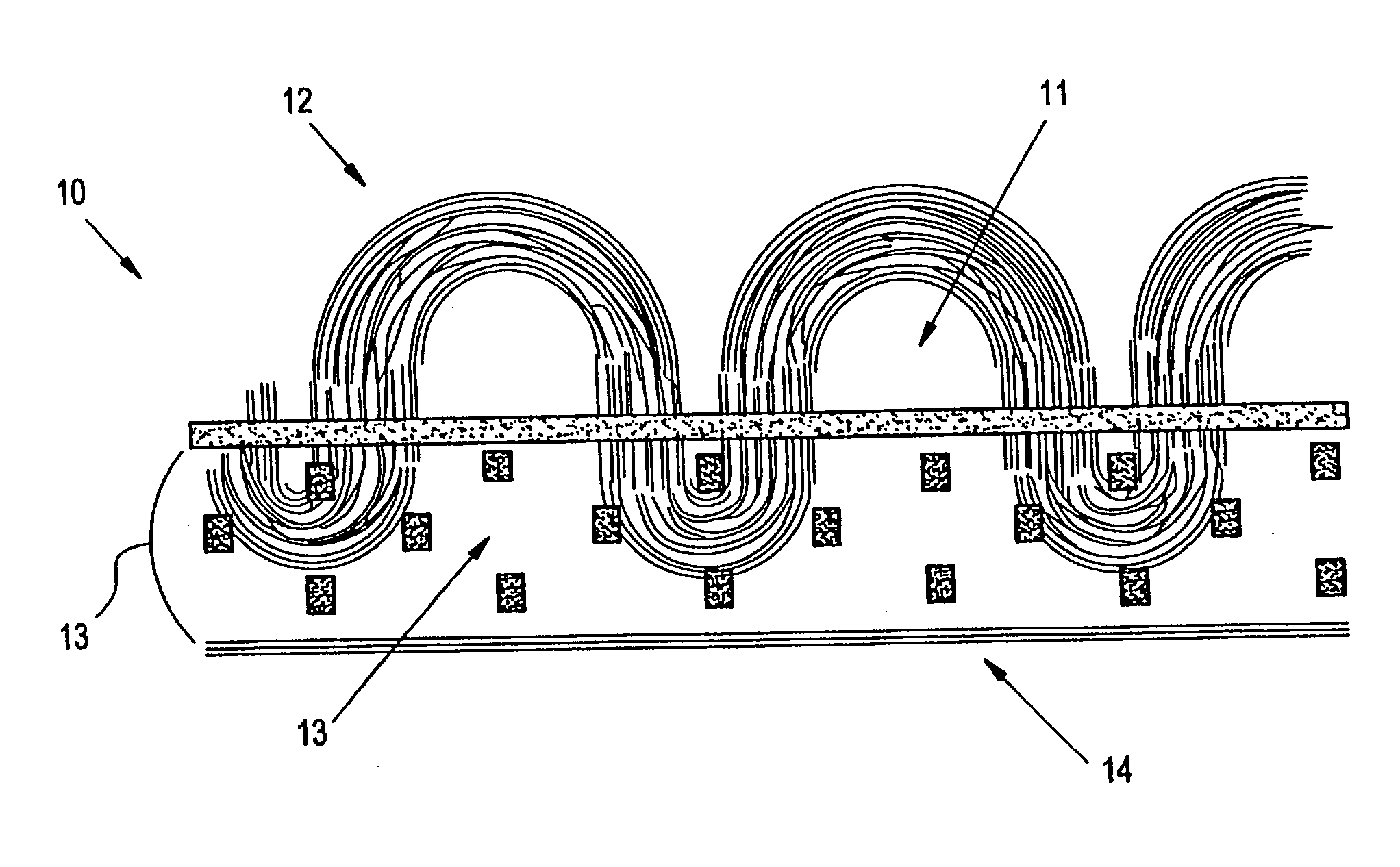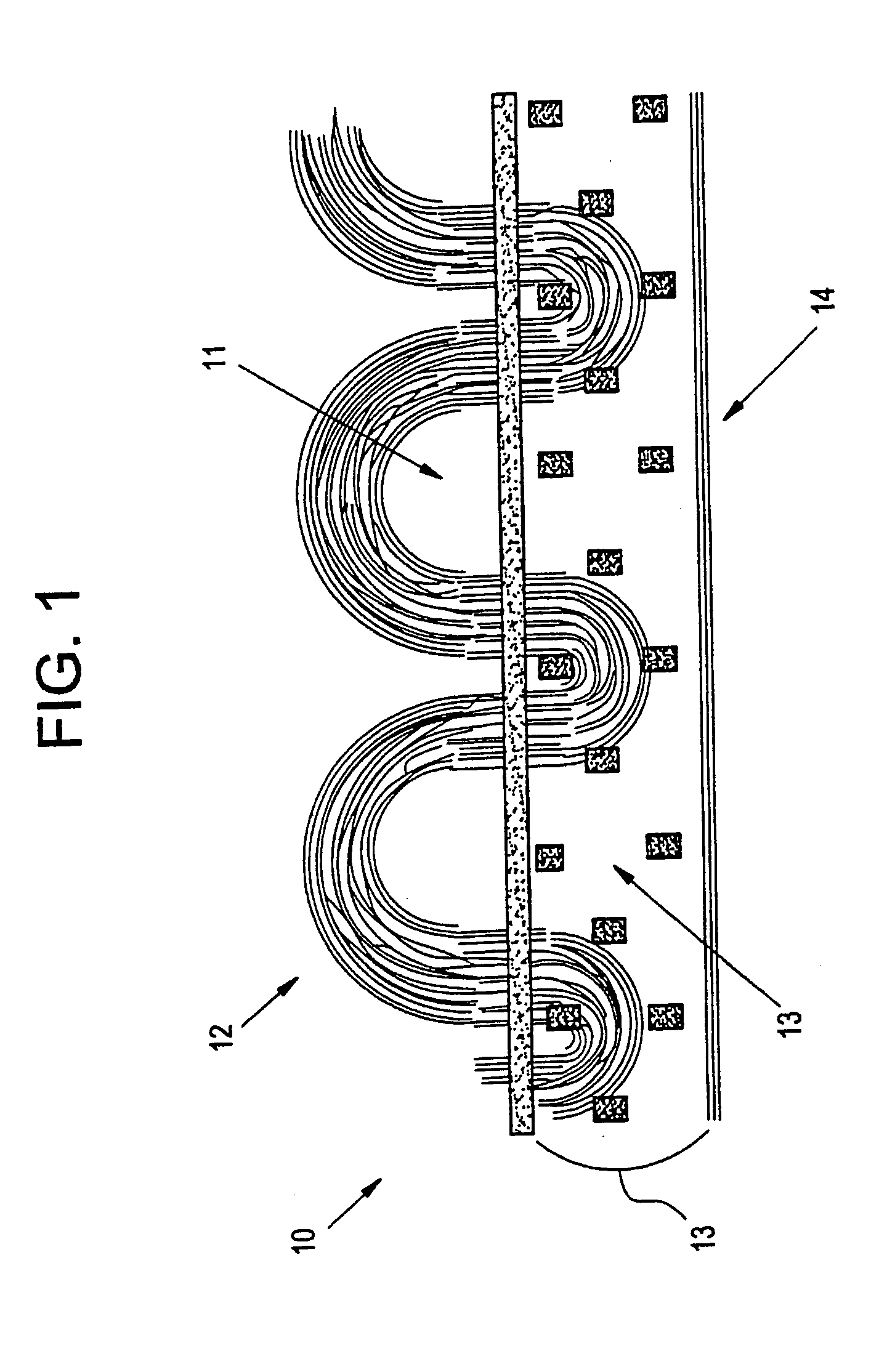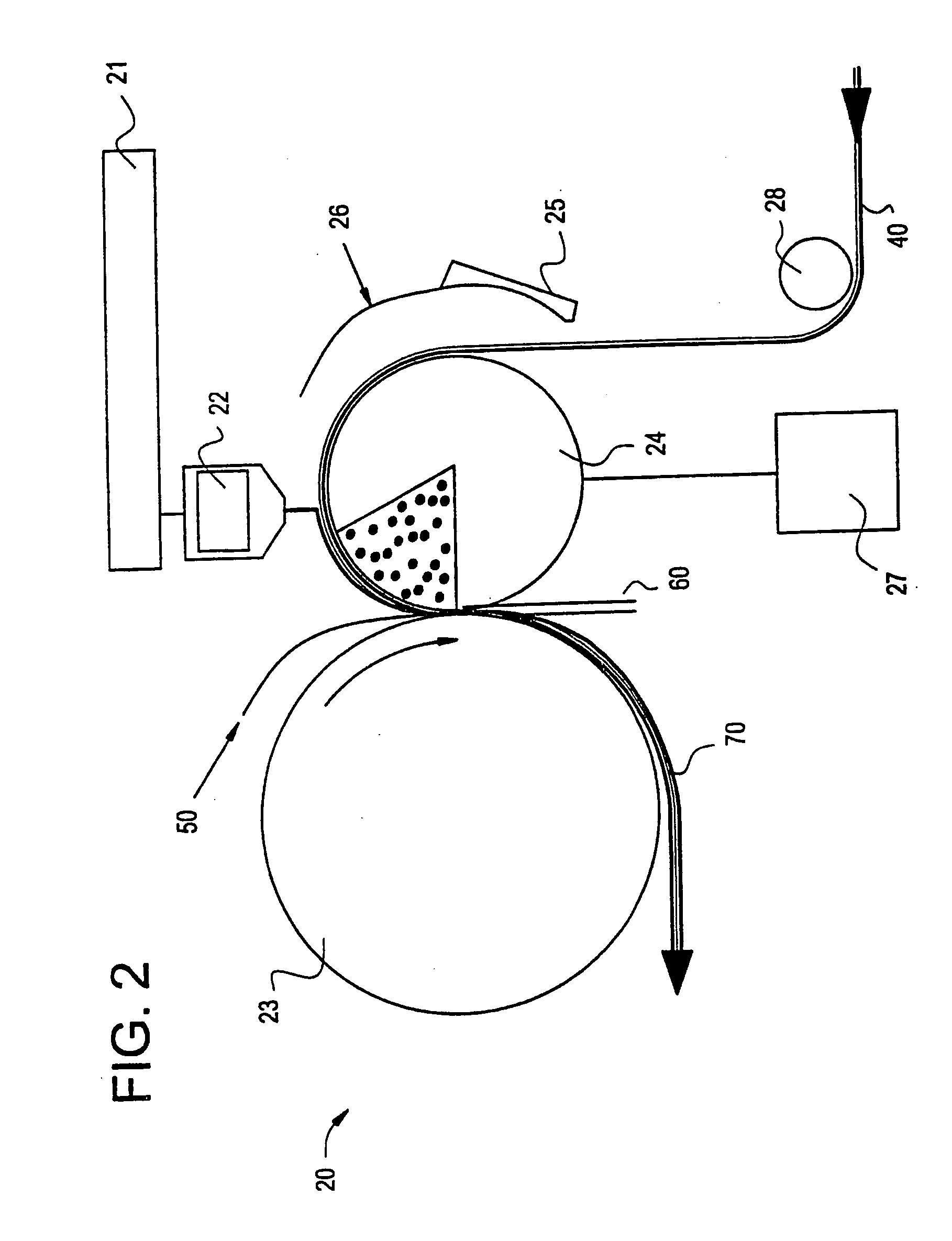Carpet, carpet backings and methods
a technology for applied in the field of carpet backings and carpets, can solve the problems of reducing the recyclability of carpets, urethane backing systems also have important effects, and typical latex adhesive backing systems do not provide moisture barrier,
- Summary
- Abstract
- Description
- Claims
- Application Information
AI Technical Summary
Benefits of technology
Problems solved by technology
Method used
Image
Examples
examples 118-122
[0223] As a simulation of extrusion coating, a compression molding method was developed to melt plaques of candidate resins on to the backside of greige goods. This method employs a programmable press. The following lists the procedure.
[0224] Ethylene polymer pellets granules or powder were pressed into plaques weighing approximately 16 grams and having a thickness of 0.025 inches (0.64 mm). The press used was a pneumatic Tetrahedron programmable press. The polymer pellets, granules or powder were placed between Mylar brand polyester film in the desired plaque mold and preheated for 30 seconds at 374.degree. F. (190.degree. C.) (this was accomplished by inserting the samples into the pre-heated press and closing the platens sufficiently to allow for heating of the polymer sample without compressing it). After 30 seconds, the platens were completely closed and the Tetrahedron program was started. The program provided 2 tons (1,814 kg) compression at 374.degree. F. (190.degree. C.) fo...
examples 123-131
[0228] To measure the adhesion of candidate ethylene polymers to greige good squares, the compression lamination method described for Examples 118-122 was used. Peel strengths were then measured using an Instron set at a 25 mm / minute cross-head speed.
[0229] Table 13 gives adhesion results for various homogeneously branched ethylene polymers, high pressure LDPE, heterogeneously branched ULDPE, heterogeneously branched LLDPE, and HDPE laminated to squares made from polypropylene carpet greige goods.
12TABLE 13 Adhesion Strength, lbs. Example Resin (kg) 123 E 7.83 (3.6) 124 B 4.82 (2.2) 125 C 1.77 (0.8) 126 G 3.19 (1.4) 127 I 4.73 (2.1) 128* P 0.40 (0.2) 129* N 1.60 (0.7) 130* O 1.41 (0.6) 131* M 1.79 (0.8) 132* Q 0.49 (0.2) *Denotes Comparative Run Example; the example is not an example of the preferred embodiment of the present invention.
[0230] These Examples show that homogeneously branched substantially linear ethylene polymers and homogeneously branched linear ethylene polymers pro...
examples 133-141
[0236] To indicate the relative ability of candidate ethylene polymers to penetrate carpet yarn or fiber bundles at reasonable processing temperatures and thereby provide good carpet performance, solidification temperature testing was performed. In this test, candidate ethylene polymers were tested in the Temperature Sweep mode on a Rheometrics Mechanical Spectrometer 800E (S / N 035-014) fitted with a cone / cylinder fixture. The dimensions of the fixture were 52 mm (cup inside diameter).times.50 mm (bob outside diameter).times.17 mm (bob height).times.0.04 (cone angle). The gap between the bob and cup was calibrated to 50 .mu.m.+-.2 .mu.m at room temperature and zero gap at 220.degree. C. Samples were loaded into the cup and heated until molten. The gap was set to 50 .mu.m.+-.2 .mu.m as soon as the bob was pushed in. Any excess amount of samples or overflow was cleaned away. The solidification measurement was initiated when the tool temperature reached 220.degree. C. The cup was oscil...
PUM
 Login to View More
Login to View More Abstract
Description
Claims
Application Information
 Login to View More
Login to View More - R&D
- Intellectual Property
- Life Sciences
- Materials
- Tech Scout
- Unparalleled Data Quality
- Higher Quality Content
- 60% Fewer Hallucinations
Browse by: Latest US Patents, China's latest patents, Technical Efficacy Thesaurus, Application Domain, Technology Topic, Popular Technical Reports.
© 2025 PatSnap. All rights reserved.Legal|Privacy policy|Modern Slavery Act Transparency Statement|Sitemap|About US| Contact US: help@patsnap.com



